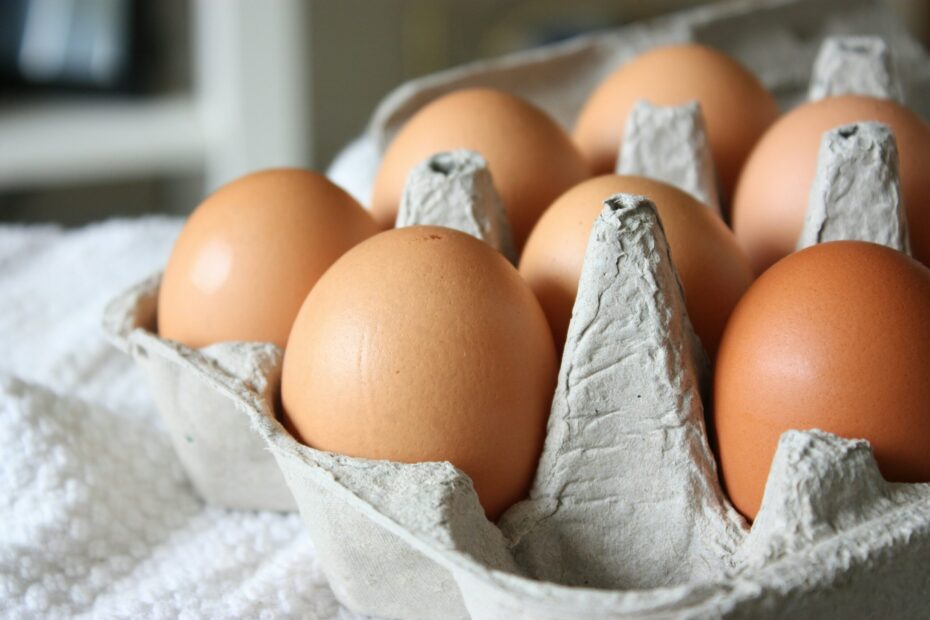[ad_1]
Some of the links in this post may contain affiliate links for your convenience. As an Amazon Associate, I may earn a small commission from qualifying purchases without any increase in price to you.
Never run out of eggs again! Dehydrated eggs are a convenient and shelf-stable option for busy families. Beyond convenience, though, dehydrated eggs shine in emergencies when fresh options might be scarce. Here’s what you need to know about how to use dehydrated eggs.

Chances are, you’ve already eaten dried eggs and didn’t even realize it. Many restaurants, school cafeterias, and the military use dried eggs because of their versatility, ease of storage, and convenience. At first glance, powdered eggs may not be very appealing, but don’t be fooled. They’re a good addition to your food storage planning, offering a simpler long-term solution compared to preserving fresh eggs. Let’s explore the different types, storage tips, and clever ways to incorporate them into your meals!
Forms of Dried Eggs
Dried eggs are sold by all the major food storage companies that sell packaged meals convenient for camping, hiking, hunting, and the like. Dehydrated eggs come in various forms:
Whole Dried Eggs
Dried whole eggs are the most versatile of all the dried egg products because only dried and powdered eggs are in the container. Ideal for baking, casseroles, and breading.
Dried Egg Whites
Dehydrated egg whites are another fantastic option for preppers and health-conscious cooks. Sold separately from dried whole eggs, they come in powdered form and boast all the protein of an egg white without the fat or cholesterol. This makes them perfect for low-fat recipes and meringues.
Dried Scrambled Eggs
Dried scrambled eggs produce something that looks and tastes like scrambled eggs, with a scrambled egg consistency. They’re pre-seasoned and very handy for quick, tasty meals.
In my research, they were the only dried egg product that contained numerous additives, such as bacon, ham, or dehydrated peppers. Some brands also contained preservatives, flavorings, and artificial coloring. Check the ingredients for additives or allergens.
How to Use Dehydrated Eggs
Dehydrated eggs are surprisingly versatile, but knowing how to use them can make all the difference. Here’s a breakdown on incorporating them into your meals:
Reconstituting vs. Direct Use
- Reconstituting: Some recipes work best with rehydrated eggs. In these cases, mix one part dried egg powder with one part water (check the label for specific ratios). Let the mixture sit for 5 minutes before using. Think scrambled eggs, omelets, or frittata fillings.
- Direct Use: Many recipes don’t require reconstitution, especially baking goods like cakes, muffins, or breads. Simply measure the dried egg powder directly and add it to your dry ingredients.
Finding the Right Amount
Most brands recommend a 1:1 ratio of water to dried egg powder for reconstitution, but always double-check the label. They might suggest slight variations for optimal texture.
Adding Moisture
When using dried eggs in place of fresh eggs in baking, remember that the powder absorbs moisture. To compensate, add a little extra liquid to your recipe, typically around ¼ cup for every egg you substitute.
Tips for Using Powdered Egg Mix
- Storage: Store all dried eggs in a cool, dark place for maximum shelf life.
- Reconstituting: Dried whole eggs can often be used directly in recipes. However, add a little extra water to account for the missing liquid. Make sure your water storage accounts for foods requiring reconstitution.
- Calculating Quantities: Most brands recommend a 1:1 ratio of water to dried egg powder for reconstitution. Always double-check the label.
- Long-Term Storage: Track your monthly egg consumption. 70 eggs (6 dozen) equals a #10 can of dried eggs. Read more about when to order big cans and when to order small here.
Other Ideas for Dried Egg Powder
Dehydrated eggs shine in unexpected ways! Try adding them to:
- Pancakes and waffles: Add dried eggs directly to your pancake mix for a protein boost. Protein powder is another way.
- Meatloaf and meatballs: Use reconstituted eggs as a binder for a healthier alternative to breadcrumbs.
- Soups and stews: Thicken soups and stews by adding a spoonful of rehydrated eggs towards the end of cooking.
- Pancake Mix Hack: Add dried eggs to your homemade pancake mix for quick and easy breakfasts.
- Experimenting with Scrambled Eggs: For fluffy scrambled eggs, use a whisk to incorporate air when rehydrating the eggs. After mixing with water, let the mixture sit for 10 minutes before cooking as usual. You can also add a splash of milk for a creamier texture.
FAQ
Dehydrated eggs come in pouches, #2.5 cans, #10 cans, and buckets. Pouches are perfect for sampling, #2.5 cans for smaller households, and #10 cans for larger families and long-term storage. Read this post to decide what food storage canister size is right for you.
Unopened containers can last for years when stored properly. Once opened, check the label for specific shelf life recommendations.
Dried eggs are convenient, have a long shelf life, require no refrigeration, and are a great option for baking and cooking.
Related Dehydrated & Freeze-dried Food Content
Final Thoughts
Dehydrated eggs are a versatile and practical addition to any pantry. Their convenience and long shelf life make them perfect for busy families and preppers alike. With a little planning and storage know-how, you can ensure a constant supply of eggs for all your cooking needs.
[ad_2]
Source link
